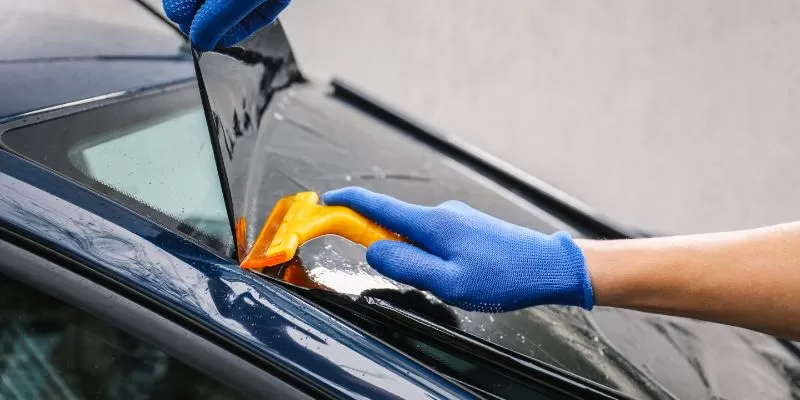Window Tinting Laws and Standards: What You Need to Know Prior To Tinting Your Vehicle
Before waging window tinting for your automobile, it is necessary to familiarize yourself with the diverse legislations and guidelines that control this method across different states. These regulations dictate the permissible levels of color darkness, typically measured by visible light transmission (VLT) portions, and include specific terms for front windshields targeted at making sure road security. In addition, certain jurisdictions might supply clinical exemptions for individuals with qualifying problems. Comprehending these intricacies can conserve you from potential lawful ramifications, yet what are the details regulations in your state?
Introduction of Window Tinting Rules
Home window tinting laws are often subject to variation across different territories, reflecting neighborhood policies and security factors to consider. These legislations dictate the allowable levels of color darkness and reflectiveness on car windows, making sure that drivers keep ample presence while additionally securing versus dangerous UV rays and warm.
A lot of laws categorize home window tinting based upon the Visible Light Transmission (VLT) percentage, which suggests the quantity of light that can go through the home window. Normally, reduced VLT percentages represent darker colors. Legislations often set apart in between the front, side, and back windows, with stricter constraints used to the front windscreen to enhance security for both the motorist and other road individuals.
Compliance with home window tinting regulations is crucial, as violations can result in penalties, obligatory removal of the tint, and potential increases in insurance coverage costs. It is important for vehicle owners to familiarize themselves with regional legislations before continuing with home window tinting installations.
State-by-State Color Rules
Recognizing the certain home window tinting regulations in each state is essential for lorry owners seeking to adhere to the law. Each state in the U.S. has established its own collection of policies controling window tinting, which can vary considerably. These guidelines usually dictate the permitted levels of tint darkness, the kinds of windows that can be tinted, and any kind of medical exemptions that may apply.
As an example, states like California have strict restrictions on tint darkness for front windows, while others, such as New Mexico, may allow darker tints. Additionally, specific states mandate particular presence percents for various home windows, consisting of the windscreen, front side home windows, and rear home windows. It is important for car proprietors to acquaint themselves with their state's legislations to avoid potential fines or fines.
Additionally, some states might need a certification sticker label to be positioned on colored windows, suggesting compliance with state regulations. Failure to stick to these guidelines not just runs the risk of legal effects but can also affect safety and visibility while driving. Lorry owners should carry out thorough study or consult neighborhood authorities to make certain full understanding and compliance with state-by-state tint guidelines.
Allowed Color Types and degrees
Lots of lorry owners might be stunned to discover that enabled tint degrees and kinds vary commonly across various states. Each state has established its very own guidelines relating to the allowable darkness and reflectivity of window color, usually gauged by Visible Light Transmission (VLT) percents. VLT describes the quantity of light that can pass with the tinted windows; hence, a reduced portion suggests a darker color.

Furthermore, the kinds of tint materials allowed can vary, with some states forbiding mirror-like or metallic finishes. It is vital for lorry proprietors to familiarize themselves with their state's certain laws to make sure conformity. Non-compliance can lead to fines, obligatory elimination of the color, or other lawful repercussions, making it necessary to understand these regulations prior to continuing with setup.
Medical Exceptions for Tinting
While not all states give allowances for medical exceptions regarding window tinting, those that do recognize the need for details people to boost visibility and convenience due to clinical problems. Different clinical problems, such as lupus, skin cancer, and particular eye disorders, can render individuals particularly conscious sunshine. Consequently, these individuals might need darker tints to safeguard themselves from unsafe UV rays and glare.

It is vital to keep in mind that despite a clinical exemption, there may still be limitations on the level of tint enabled. Conformity with state legislations makes sure that individuals are both protected and within lawful restrictions. Those thinking about clinical exceptions must contact their regional Department of Electric motor Vehicles or comparable authority to recognize the procedures and requirements needed to make an application for an see this here exception effectively.
Charges for Non-Compliance
Falling short to follow window tinting legislations can bring about substantial penalties, which differ by state. Police are encouraged to provide citations for cars that do not stick to the defined tinting laws. These penalties typically consist of penalties, which can vary from moderate total up to numerous hundred dollars, relying on the seriousness of the offense and the state in inquiry.
In some jurisdictions, duplicated offenses may lead to intensifying fines or added charges, such as compulsory court appearances. Non-compliance may require the elimination of unlawful tinting, commonly at the proprietor's expense. In extreme instances, regular offenders might face suspension of their lorry registration till conformity is achieved.
Furthermore, insurance implications may arise from receiving several citations for home window tint violations. Insurance providers might view such offenses as an indication of riskier behavior, possibly causing More hints enhanced premiums or trouble in protection.
To stay clear of these penalties, it is important for automobile proprietors to acquaint themselves with their local window tinting legislations and make sure that their vehicle complies (Window Tinting). This aggressive strategy not just prevents legal implications yet likewise advertises roadway safety
Final Thought

The majority of regulations classify window tinting based on the Visible Light Transmission (VLT) percentage, which indicates the quantity of light that can pass via the window. Conformity with window tinting regulations is important, as violations can result in fines, required elimination of the color, and prospective rises in insurance policy costs.Recognizing the particular window tinting laws in each state is essential for car owners looking for to conform with the regulation. These policies usually determine the permitted degrees of tint darkness, the kinds of windows that can be tinted, and any kind of clinical exemptions that might use.
For circumstances, states like The golden state have strict restrictions on color darkness for front windows, while others, such as New Mexico, the original source might enable darker colors.